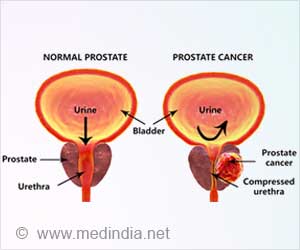- ‘Reverse engineering’ of brain cancer cells is now possible using the latest technology
- This will help in the identification of new drug targets for dangerous cancers such as glioblastoma
- This will facilitate the development of novel treatments for glioblastoma
Notably, adult glioblastoma cells share the same genes responsible for brain development during infancy and early childhood. The study, published in Cell Reports, has demonstrated that ‘reverse engineering’ brain cancer stem cells, gene-by-gene, is capable of elucidating many potential drug targets for developing targeted therapies against this cancer.
The study was jointly led by Dr. Peter Dirks, MD, PhD and Dr. Stéphane Angers, PhD, with active collaboration from Dr. Samuel Weiss, PhD.
Dr. Dirks is a Staff Neurosurgeon and Senior Scientist at the Hospital for Sick Children (SickKids) in Toronto, Ontario, Canada. He is also a Professor of Neurosurgery at the University of Toronto, Canada. Dr. Dirks is credited for discovering cancer stem cells in brain tumors, way back in 2003.
Dr. Stéphane Angers is an Associate Professor at the Leslie Dan Faculty of Pharmacy, University of Toronto, Ontario, Canada.
The study collaborator was Dr. Samuel Weiss, PhD, who is a Professor in the Cumming School of Medicine’s Departments of Cell Biology, Anatomy, Physiology, and Pharmacology at the University of Calgary, Alberta, Canada.
“We think that, in one big experiment, we have uncovered many new targets for glioblastoma, some of which were surprising,” says Dirks. “These glioblastoma stem cells are also resistant to treatment, which is one reason that these tumors are so hard to cure. We need new ways to disrupt these cells specifically if we are going to give people a better chance of survival.”
Read More..
Exploitation of CRISPR-Cas9 Technology for Gene Identification
CRISPR-Cas9 is a robust technique for studying cancer biology by means of genome-wide screens. Dr. Anger’s lab focuses on CRISPR-Cas9 technology for investigating cancer. Researchers at his lab used 10 patient-derived glioblastoma stem cell cultures from Dirk’s lab, and carried out what is termed as CRISPR ‘cell fitness screens’. This technique enabled the researchers to look for genes in the cancer stem cells that are essential for cell growth and survival, which therefore facilitate the progression of cancer.“Cancer stem cells fuel the growth of tumors and progression of the disease,” says Angers. “In order to effectively target these cells, having a comprehensive view of the genes controlling the growth programs is critical. If you know which genes are necessary for these cells to survive and proliferate, you can then look at ways to attack or block these genes and stop tumor growth in its tracks.”
Findings of the CRISPR-Cas9 Experiments
Using CRISPR-Cas9, the researchers at Anger’s lab systematically knocked out each of the 20,000 genes – one gene at a time – in the glioblastoma cells from the 10 patients. They found that multiple genetic vulnerabilities can lead to cancer.Of note is the fact that the study is one of the first instances where CRISPR screens were performed directly in parallel on multiple patient cells that had been freshly isolated. Moreover, the study generated a huge amount of new data that could be mined to identify novel drug targets for glioblastoma.
A gene, termed as DOT1L, was crucial for persistence of the tumors in 7 of the 10 glioblastoma patient cell cultures. The collaborators, led by Dr. Weiss, tested the efficacy of a drug (Temozolomide) that is used for treating leukemia, in preclinical models for inhibiting the DOT1L gene product in glioblastoma stem cells.
“We found that blocking this specific protein in this particular form of brain cancer reduced tumor growth and resulted in longer survival in the preclinical model,” says Angers. “This is promising because it uncovered a biological process, not previously suspected to be implicated in glioblastoma, for which a small molecule drug already exists.”
Conclusion
A substantial amount of time, effort and money have been spent in recent years for sequencing the genome of cancer cells. While this has provided insights into the mutations in glioblastoma cells, it has not resulted in advancements in the development of treatments for this cancer. This indicates that information about genetic mutations is not sufficient as this provides a static picture of cancer.The study, therefore, highlights the fact that a better understanding of the functioning of cancer cells as well as specific genes responsible for tumor growth is essential, so that the tumor cells can be effectively targeted and killed.
Reference:
- Genome-Wide CRISPR-Cas9 Screens Expose Genetic Vulnerabilities and Mechanisms of Temozolomide Sensitivity in Glioblastoma Stem Cells - (https://doi.org/10.1016/j.celrep.2019.03.047)
Source-Medindia
















